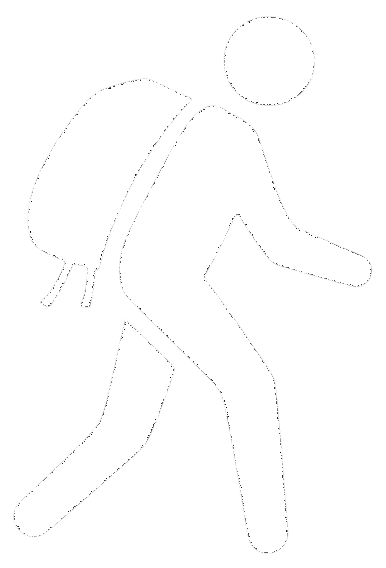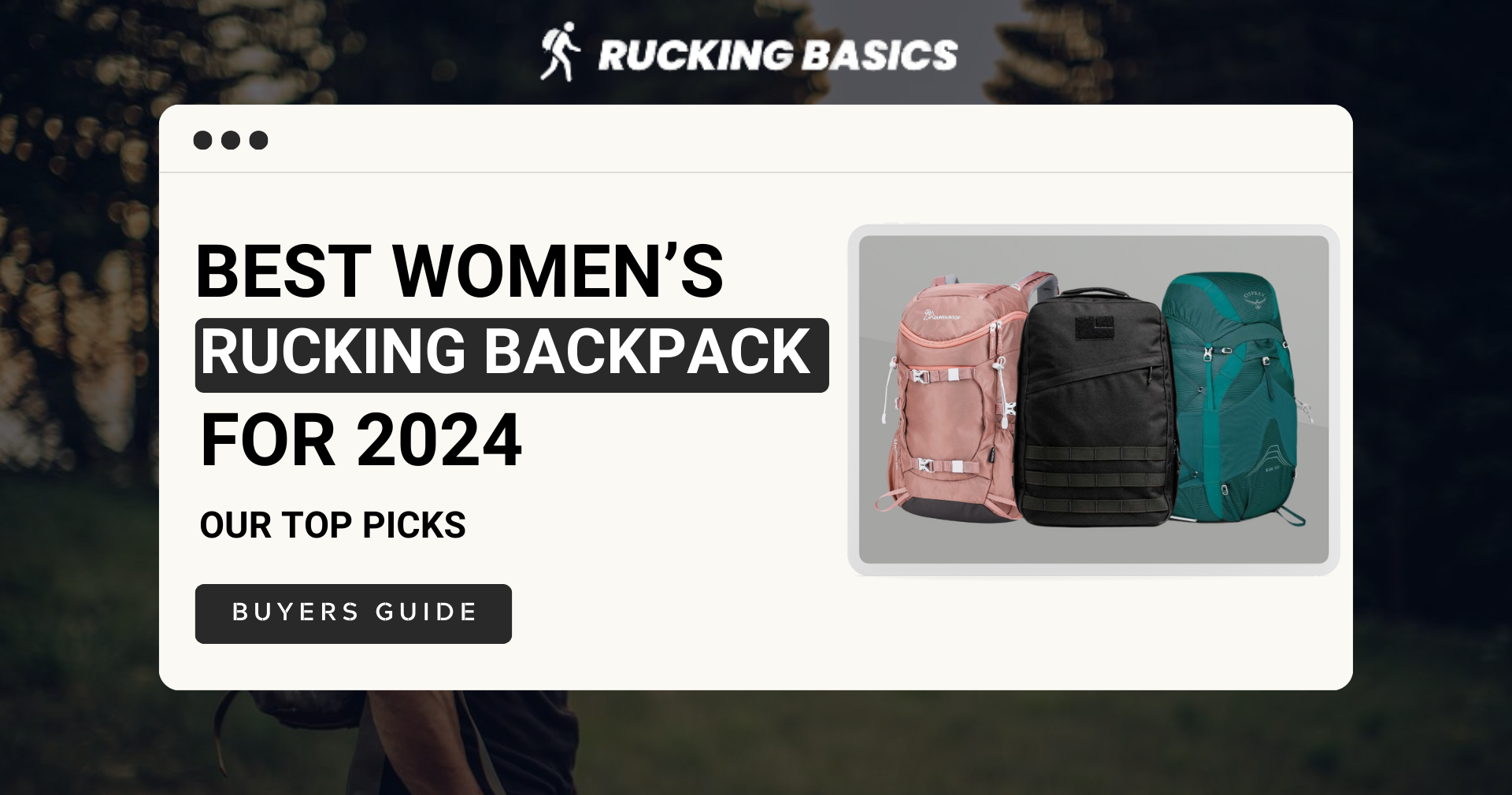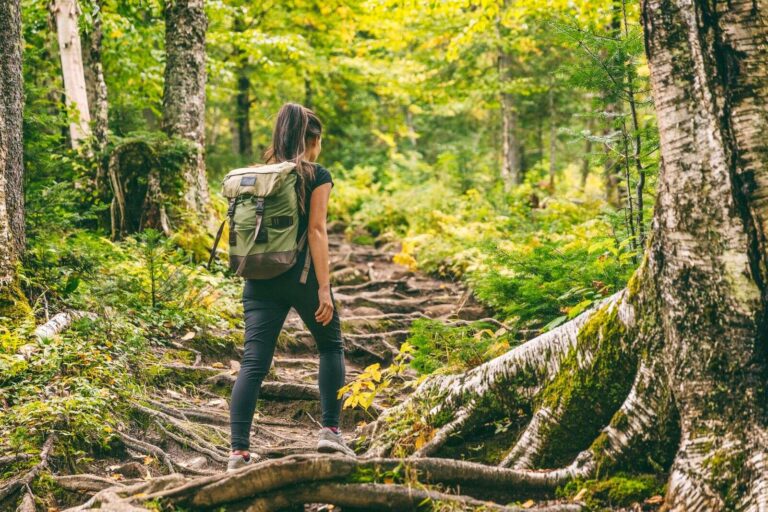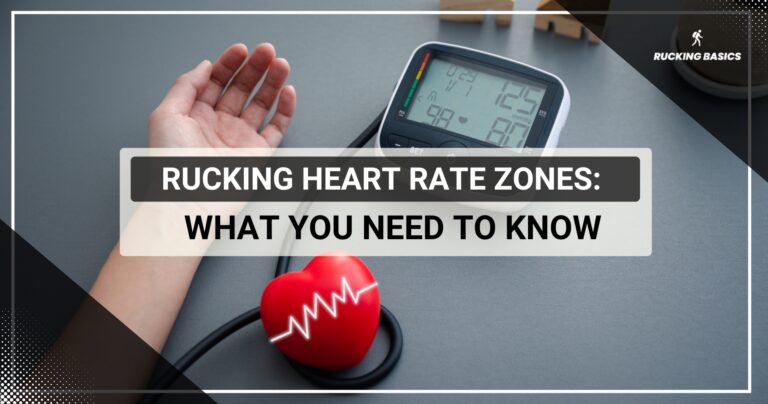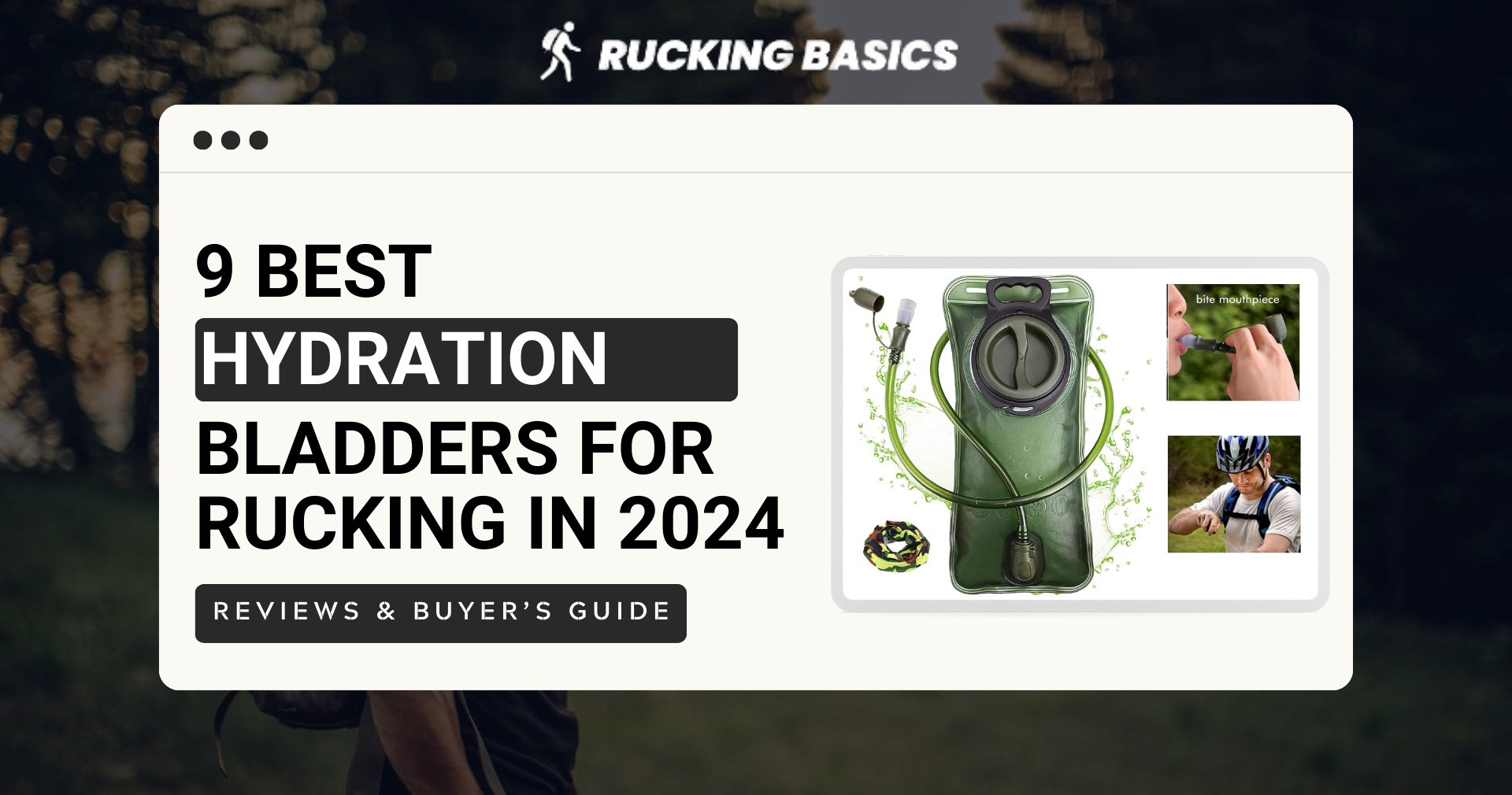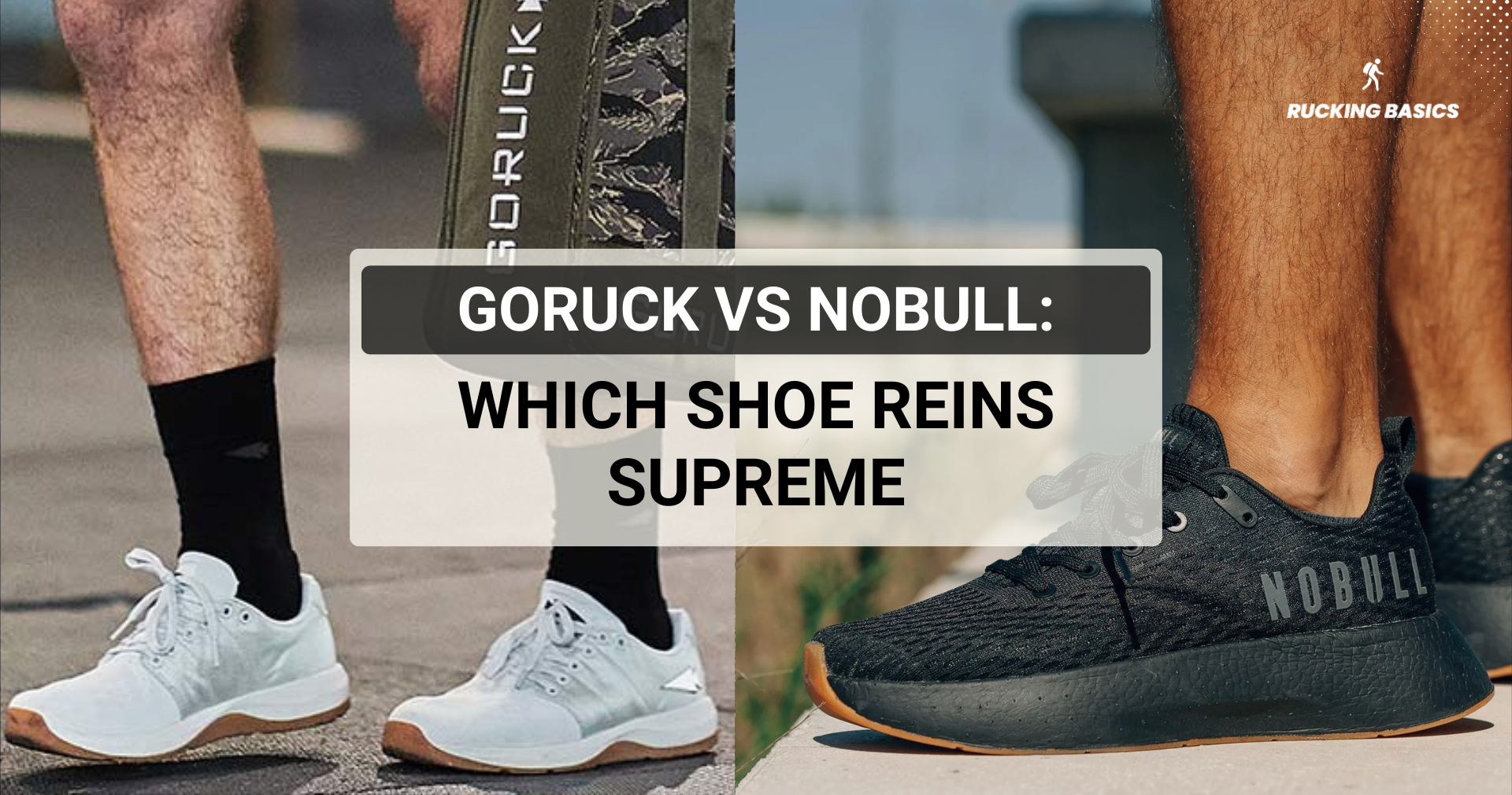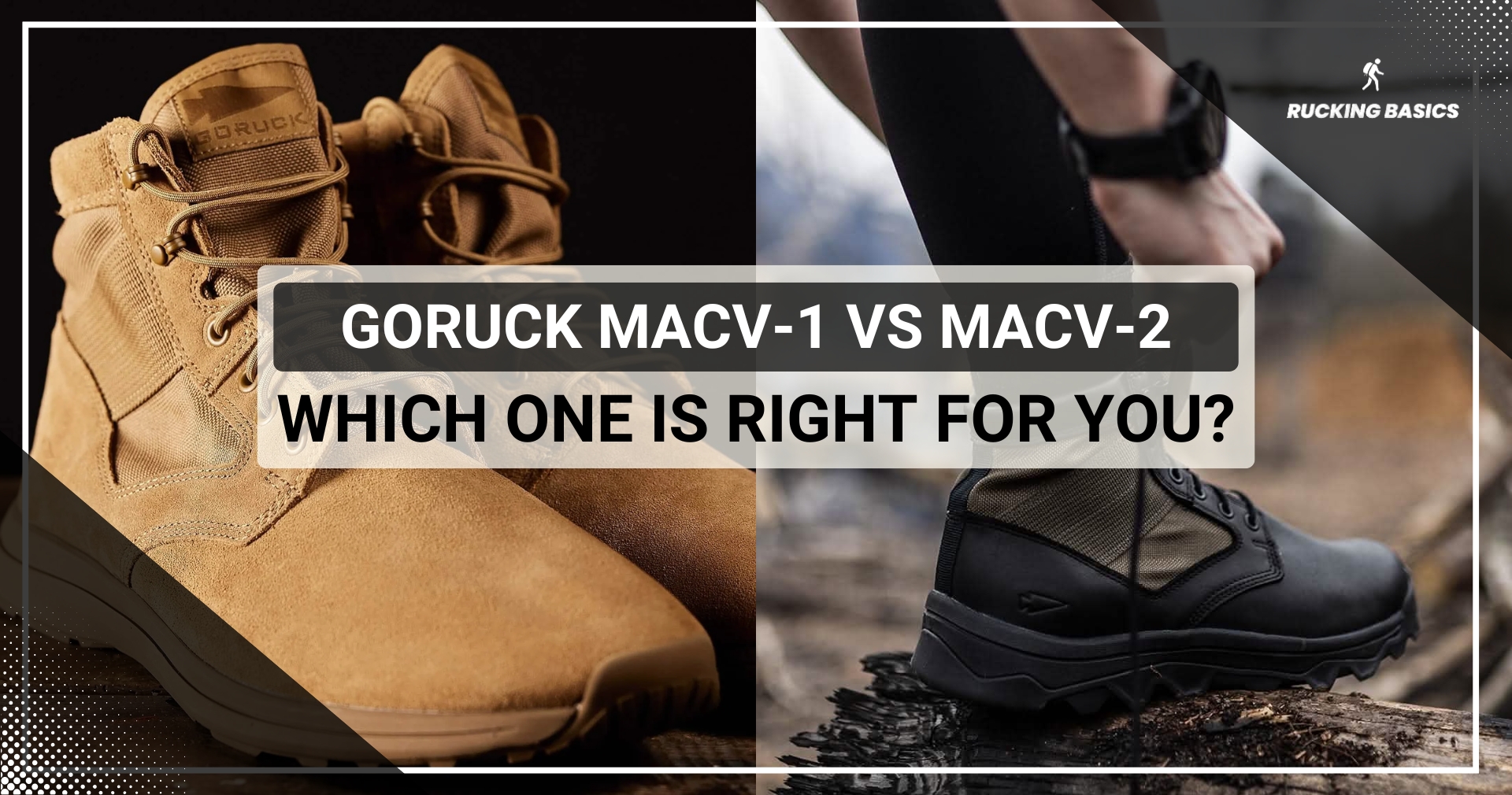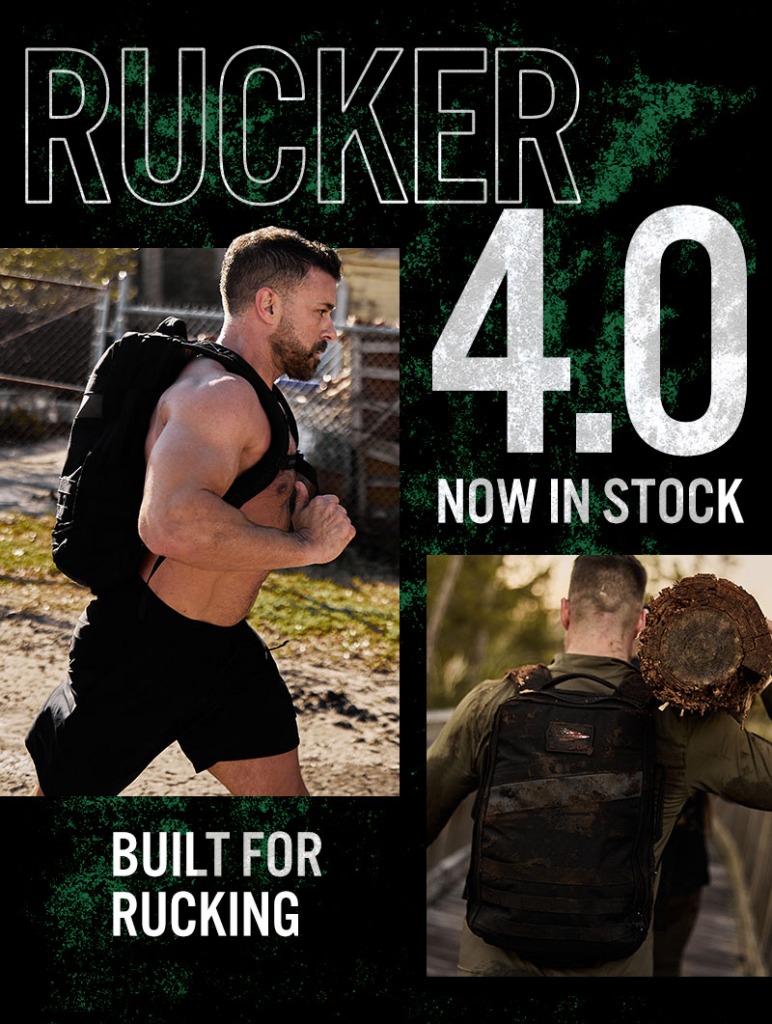Welcome, ladies.
For decades, the outdoor equipment industry has often overlooked the unique anatomical needs of women, including narrower shoulders, shorter torsos, and different weight distribution. We understand these needs and are here to address them.
A specialized women’s rucking backpack and training weight vest address these differences, which are of the utmost importance for your comfort and performance. These considerations are especially crucial when rucking for women, as a better fit can enhance comfort and prevent injuries.
Ergonomics and proper fit are paramount to maximizing the benefits of rucking. So, let’s not wait any longer; it’s time to analyze the best women’s rucking backpacks.
Top 6 Best Women’s Rucking Backpack
Don’t worry, I didn’t single out these backpacks just based on their features, manufacturer, and price; my girlfriend helped me and tested each of them during our several ruck marches in the past two months. Research and her experience has helped us create this best ruck pack for women guide.
Best Overall: Osprey Eja 58 Women’s Ultralight Backpacking Backpack
Osprey Eja 58 is a fantastic option for women who need a big, reliable, yet lightweight pack for long trips. It has a large capacity, so many people use it for hikes where resupply options are sparse, such as the Appalachian Trail or the Colorado Trail. You can also use it for multi-day rucks or when you want to carry heavy weights and improve your cardiovascular fitness.
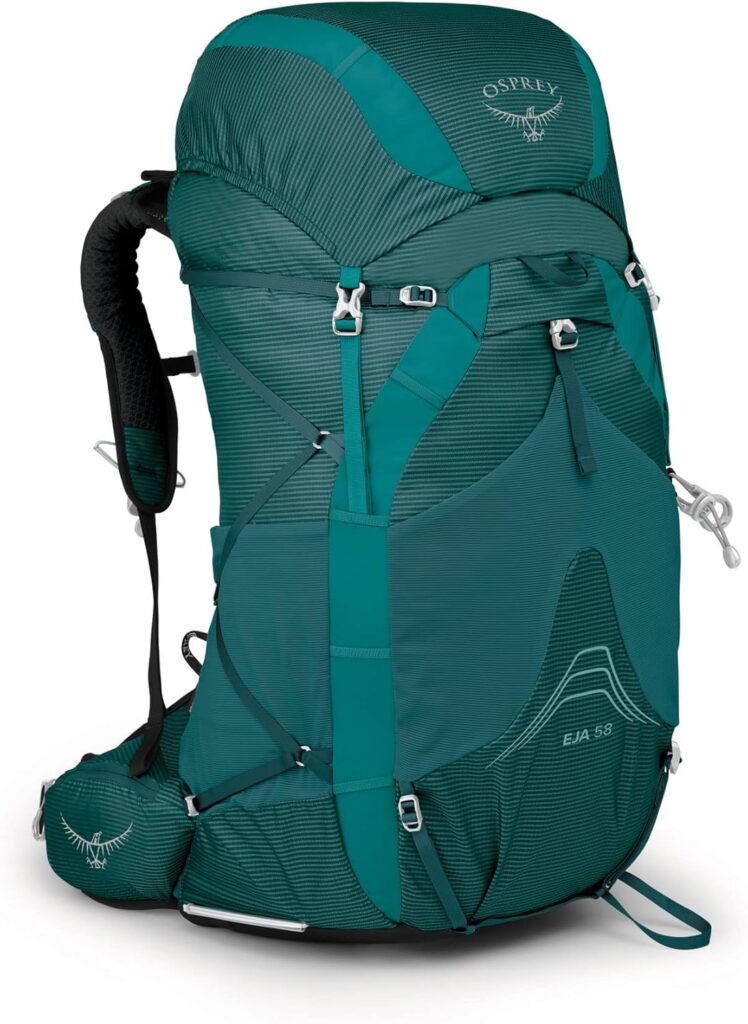
One of the standout features is the AirSpeed® suspension system, which provides excellent ventilation and keeps you cool. The comfort is impressive, especially for such a big pack.
The adjustable ladder system offers four inches of torso adjustability, so if you are not extremely short or tall, this rucking backpack will be a great fit.
I also appreciated the Eja 58’s versatility. You can remove the floating lid and use the integrated FlapJacket for lidless use, to reduce the weight. There are also many other options, such as the internal hydration sleeve, hipbelt pockets, and so on.
The pack’s durability is another big plus. Recycled nylon ripstop is equally durable and environmentally friendly.
Best Unisex: GORUCK GR1 USA – Cordura (The Original Ruck)
The GoRuck GR1 is equally suitable for women and men. On the manufacturer’s official website, a photo of a woman wearing it was posted, so there is no doubt that this is a 100% unisex model. It is available in two sizes — 21L and 26L — both smaller but more than enough for ruck sessions.
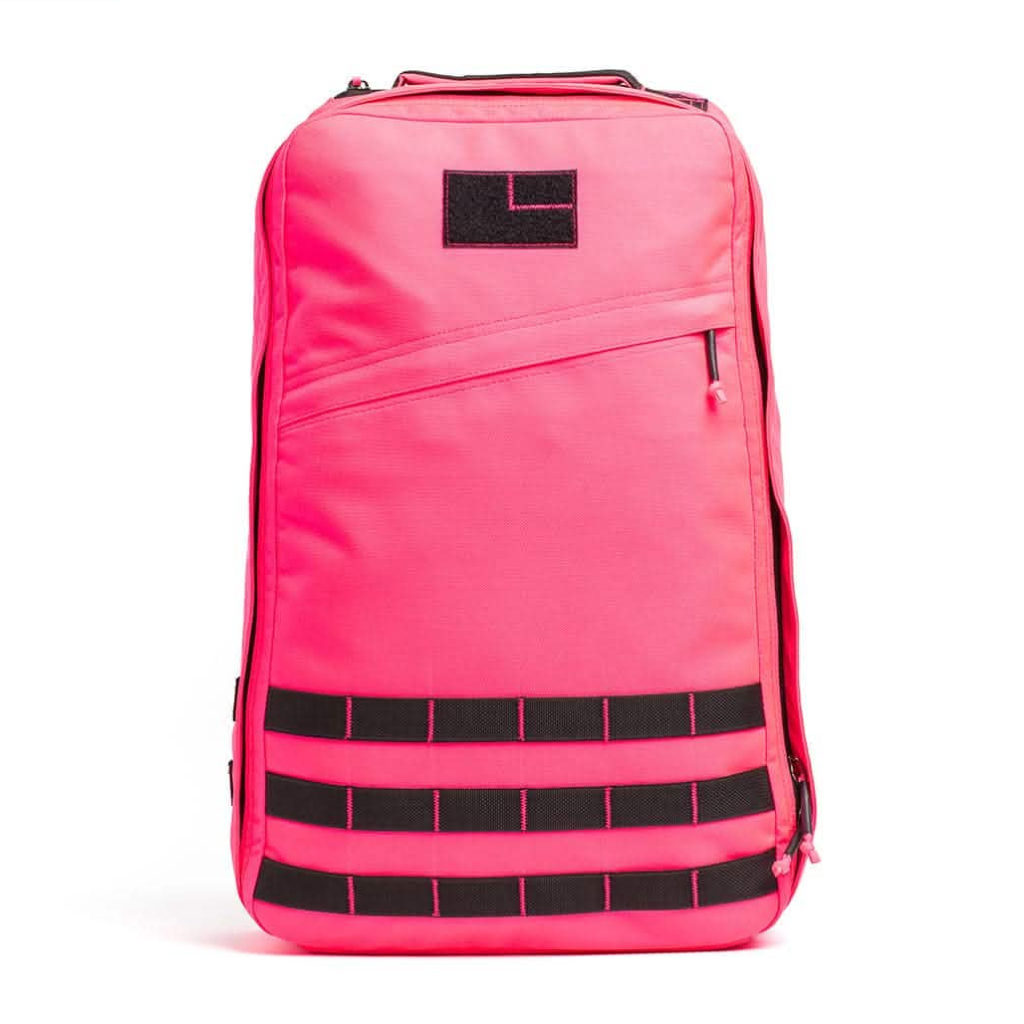
Since it was made exclusively for rucking and not hiking or backpacking, these two capacities offer more possibilities than some other, larger backpacks. There’s room for a ruck plate, hydration, and everything else.
Packing and organizing the GR1 is so easy, thanks to its flat-open design and multiple internal pockets. It features three internal pockets and an external slant pocket.
Durability is where the GR1 truly shines. It includes a bombproof laptop compartment and YKK zippers. The rigid plastic frame sheet is a game-changer, stabilizing the load and allowing for comfortable weight distribution.
Overall, the GORUCK GR1 is a remarkable unisex rucksack built in the USA and backed by GORUCK’s Scars Lifetime Guarantee.
Best Premium: Gregory Mountain Products Deva 70
Gregory Deva 70 Pack is specifically designed for women who are hard-core ruckers. Available in three volumes: 65, 70, and 75L, it offers unmatched fit and comfort. There is so much space that you will certainly be able to carry everything you want for the many days you will spend rucking.
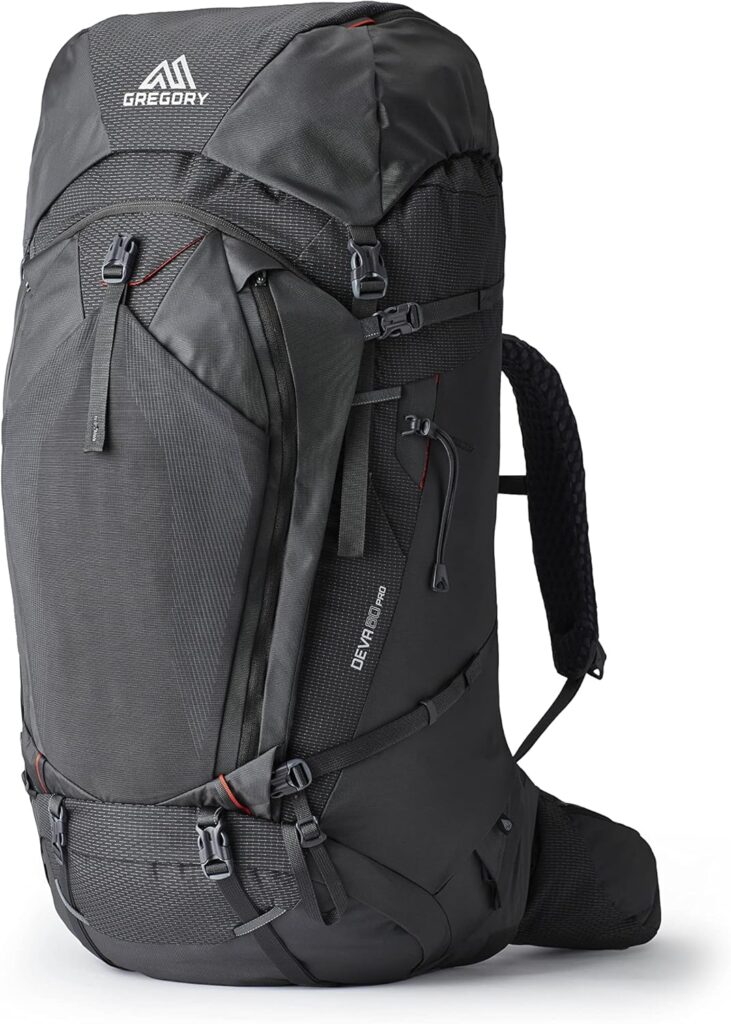
Logically, its size is not ideal for few-hour rucks or urban rucking, but for such needs, you will not be looking for a 70-liter backpack.
The standout feature is the FreeFloat A3 dynamic carry system. The hipbelt, shoulder harness, and lower back panel adapt to the body’s unique shape and move naturally with your walking movements.
My girlfriend was amazed with the breathability, thanks to the 3D mesh that’s over 90% open air. Plus, it wicks away moisture, which is a huge bonus on hot days. It also features the Polygiene® Stays Fresh Technology, which helps control odor.
Organization and accessibility are top-notch. It has front U-zip access to the main compartment, dual front zippered pockets, and a floating top pocket with several compartments. The oversized hip-belt pockets are big enough for essentials.
You don’t have to worry about durability. The materials are made with a significant portion of recycled nylon and treated with a PFC-free, durable water repellent.
Best Affordable: MOUNTAINTOP Small Hiking Backpack 28L Travel Daypack Lightweight for Women
After my girlfriend took the MOUNTAINTOP 28L Hiking Backpack on a couple of short outdoor adventures, it quickly became her go-to for day rucks and quick overnight trips. It is lightweight but made from durable 420D fabric, so its overall durability gives me confidence.
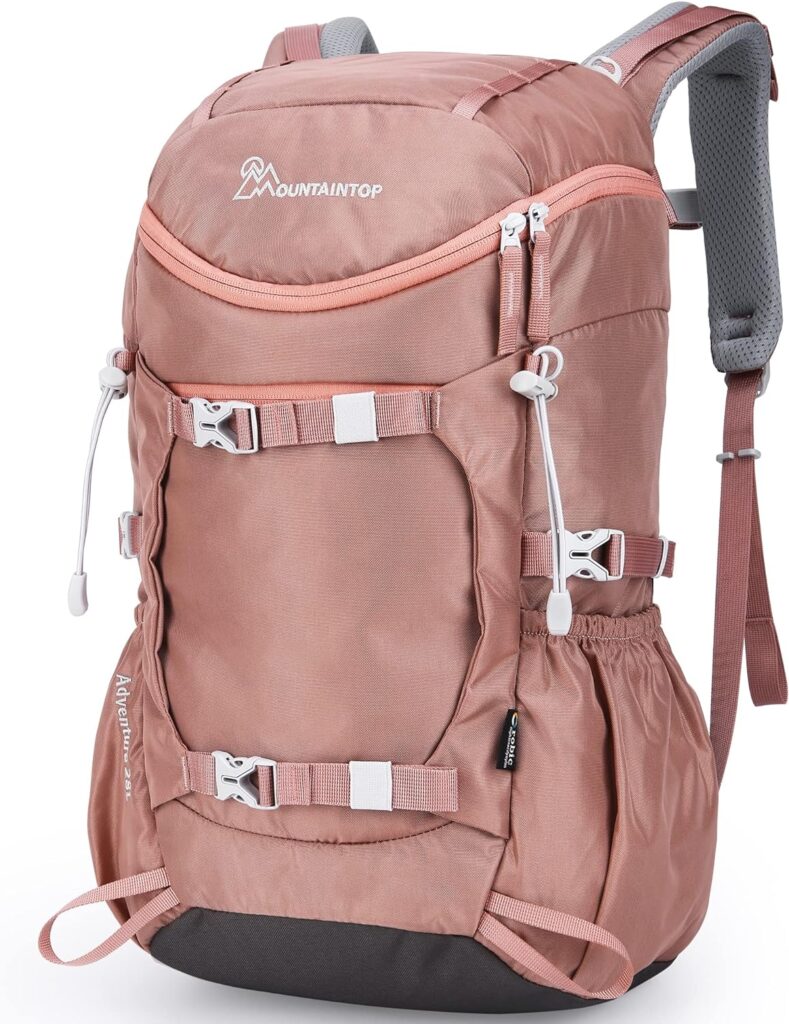
Despite its compact size, this 28L backpack has plenty of room to meet needs for 1–2-day trips. The main compartment is big enough, and the multiple pockets can hold all your other gear and rucking accessories.
It is not too hot, thanks to the breathable mesh straps. Even foam padding on the shoulder straps and the back panel does not disturb the airflow.
MOUNTAINTOP 28L Hiking Backpack is compatible with the hydration bladder and has a slot for the hose. One handy feature is trekking pole loops for securing poles when not in use.
I do not doubt that you will love the design, whatever color you choose.
Best Support: Kelty Redwing 50 Women’s – 50 Liter Internal Frame Backpack for Hiking, Backpacking, Travel
I heard from several fellow ruckers that this backpack has a fantastic reputation, and it truly lives up to its status in the rucking community.
Are you having trouble adjusting rucking backpacks? No problem, since this one has the advanced perimeter frame. This frame, along with the new FIT-Pro adjustment system, allows for a quick and customized fit. My girlfriend found it incredibly easy to adjust on the go.
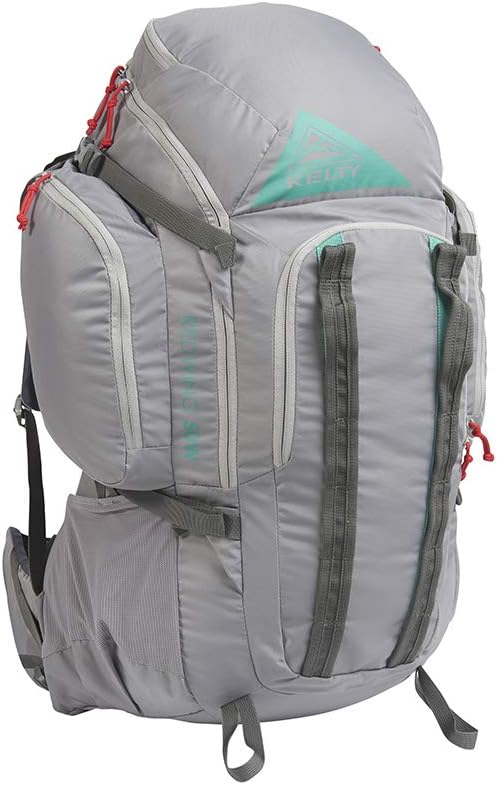
The AMP-Flow ventilated back panel keeps the back cool and dry even during intense rucks.
The storage options are plentiful, with Kelty’s signature wing pockets, two front zippered pockets, and a hybrid U-zipper for top or panel loading.
Kelty’s reputation for quality is well-earned, and the Redwing 50 Women’s backpack is built to withstand different tough conditions.
Regarding balance and support, the aluminum stay in the external frame takes care of that aspect.
The women’s version is slightly smaller than the men’s version, but not much, and both sizes provide ample space without being too bulky.
Best for Multi-Day Ruck: TETON 55L Scout Internal Frame Backpack for Hiking, Camping, Backpacking, Rain Cover Included
Over 7500 product reviews with an average score of 4.7 speaks volumes about this model.
It has plenty of space, is comfortable, and is durable, making it equally good for beginners and experienced ruckers.
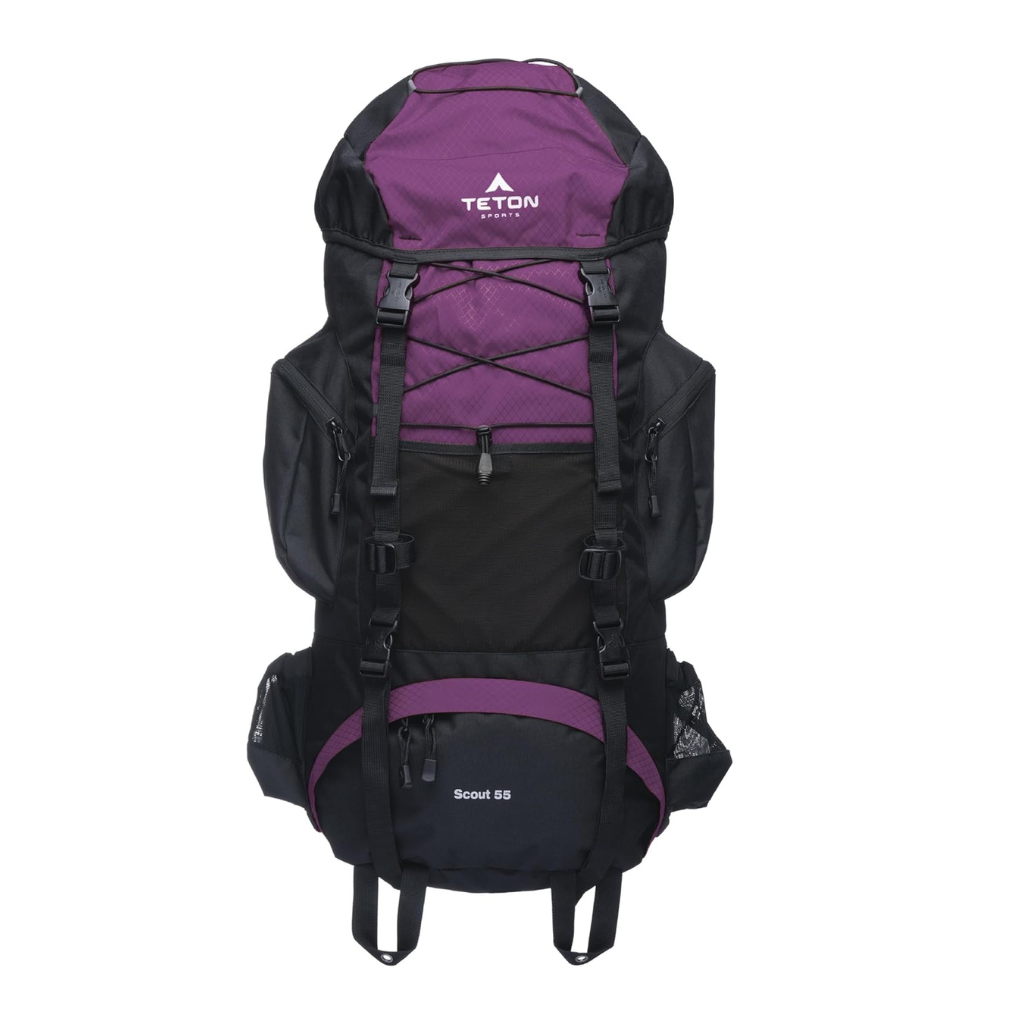
The backpack is available in multiple sizes, and the 55L version my girlfriend tried should be the best option for most people. However, if you need more or less space, you should definitely consider the 45 and 65-liter versions as well.
The open-cell foam lumbar support pad is so comfortable. The Scout 55L is thoughtfully designed with many compartments, including a large sleeping bag compartment. The manufacturer listened to the users’ wishes and added the new tilted water bottle storage. It is a nice touch, making hydration easy.
This pack’s versatility makes it a great choice for both women and men, but due to its sleek, contoured fit, I’ve seen women wear it more often.
Considerations for Choosing the Best Women’s Rucking Backpack
Things to consider are mostly the same as when buying a men’s or unisex rucksack. Apart from choosing reliable producers like Mystery Ranch, focus on the following. Here’s what you should consider when determining the best rucking backpack for women.
Ease of Use
Maybe you are not aware of how important ease of use is in choosing a rucking backpack, but it can really impact your overall experience.
The average woman weighs about 160 lbs plus rucking weight — you certainly don’t want to “fight” with a backpack during a physically demanding activity.
Look for backpacks with quick-release buckles, allowing easy and fast adjustments, particularly when putting on or taking off the pack. Accessible compartments, such as top-loading or front-loading designs, make it simple to reach your gear without having to dig through the entire pack. These are just some of the user-friendly features that ensure your backpack is convenient to use.
Aesthetics and Style
Let’s be honest, ladies. While not the most crucial feature, I understand that you still want a backpack that looks good, even in the midst of nature. And there’s absolutely nothing wrong with that.
So, while functionality is key, you can pay attention to the aesthetic appeal as well. Choose a design and color that you want, as this can enhance your overall rucking experience and motivation. Many women’s rucking backpacks offer a range of styles, from sleek and minimalist designs to more vibrant and colorful options.
Most manufacturers managed to balance style with practicality.
Fit and Comfort
An uncomfortable backpack will make it difficult to travel from home to work while carrying only a laptop. Just imagine what will happen when a ruck plate is inside instead of a laptop, and you have to ruck for hours.
Padded shoulder straps and hip belts are a must, in my opinion, as they help distribute the weight evenly, reducing pressure points the weight plate can create and preventing discomfort during long rucks. Proper fit and comfort are the most important factors in choosing a backpack. Check for adjustable straps, too. They allow you to customize the fit to your body shape.
Capacity and Size
Smaller packs are usually sufficient for short rucks and day trips, and for longer distances or when carrying heavier loads, opt for larger backpacks ranging from 40-50 liters or more.
Keep in mind that a rucksack is not the same as a ruck plate carrier (weighted vest). You need extra capacity to accommodate additional gear, water, and supplies needed for extended outings. Petite women should consider compact designs that suit their body type, ensuring the backpack does not overwhelm their frame while still having enough storage space.
Weight Distribution
Sometimes, it’s not the weight that causes problems but the distribution of it.
Poorly designed, cheap backpacks usually don’t have internal frames that are key for evenly distributing weight. The frame helps reduce strain on your back and shoulders.
Load lifters — located near the top of the shoulder straps — are another helpful addition since they help pull the weight closer to the body. This enhances balance and reduces the effort needed to carry the load.
Durability and Material
We all need durable materials such as ripstop nylon or Cordura for rucking. These materials are made to be strong and resistant to abrasion. Since you will be carrying a heavy load and going through nature, where many things can damage your backpack, durability is really important.
Check for stitching at stress points, like the shoulder straps and base of the pack, to ensure seams won’t tear under heavy loads. Robust zippers are also crucial, as they provide secure closure.
Weather Resistance and Breathability
Weather-resistant materials and features protect your gear from the rain.
The material your backpack is made of should repel water and prevent moisture from seeping in. Sealed seams and waterproof zippers add an extra layer of protection, keeping rain and splashes out. Many backpacks also come with integrated or removable rain covers. I always carry a rain cover with me just in case of sudden downpours. You don’t want your phone, wallet, or other belongings to get completely wet.
Ventilated back panels can help keep you cool by allowing air to flow between your back and the backpack. This might not seem so important in winter, but it is indispensable during intense sessions or in hot weather.
Wrapping Up
Don’t hesitate to invest in quality since a well-chosen backpack can make a significant difference.
If you’ve ever used a backpack that wasn’t designed with women in mind, the difference when you switch to one of these models will be undeniable. You’ll find yourself rucking faster, more comfortably, and able to go longer distances.
We hope you enjoyed this guide that lays out the best women’s rucking backpack for all purposes. Happy rucking, and we hope to see you at one of the next GoRuck events.
Frequently Asked Questions
What is the difference between a women’s rucking backpack and a unisex backpack?
A unisex backpack can be a suitable option, but it is built to accommodate a broader range of body types. A women’s rucking backpack is designed to fit the female anatomy precisely, featuring narrower shoulder strap, compression straps, a shorter torso length, and a contoured hip belt. Taller women usually find unisex backpacks more suitable than shorter ones.
How can I modify a standard backpack to suit women’s rucking needs better?
It is possible to add padded shoulder straps, a sternum strap, and a contoured hip belt designed for women. You can also personalize the backpack to further suit your needs. Still, you probably won’t succeed in adjusting it totally and making it equal to a women’s rucking backpack.
How often should I replace my women’s rucking backpack?
The rules are the same as for any other backpack — check for signs of wear and tear, loss of structural integrity, or reduced comfort. A regular inspection will show whether you need to change your backpack every 3-5 years or sooner.
